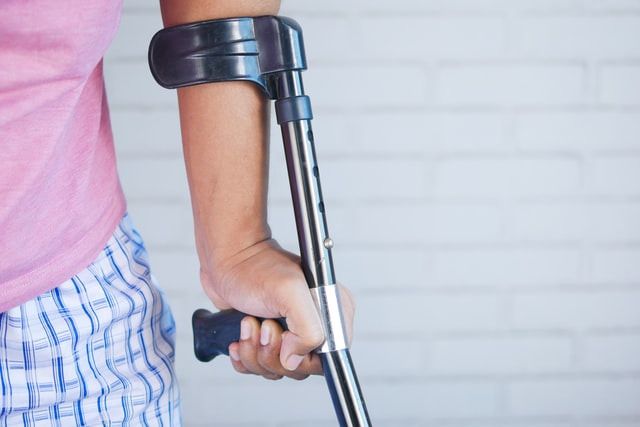It’s fair to say many employers respond defensively to accident at work claims being brought against them. The Employers Liability (Compulsory insurance) Act 1969 makes it mandatory for employers to carry a minimum level of insurance cover to meet claims brought by their employees. Therefore it’s not usually the fear of having to find the money to meet the claim that causes employers to choose ‘fight mode’ when a letter of claim from a firm of personal injury solicitors lands on their doorstep.
Quite often, pride gets in the way of a more rational response. After all, an employer owes a duty of care to his employees to keep them safe at work. An employee who gets injured in an accident at work that is the employer’s fault has every right to bring an accident at work compensation claim against the company they work for.
For the responsible employer, a claim from an employee injured whilst at work can be the catalyst for a more proactive approach to ensuring employees are kept safer in the future. A root and branch risk assessment and education programme may be in order.
However, remember the adage about Rome not being built in a day? So, it might be an idea, first of all, to look at ways of preventing the most common type of accident at work.
What is the most common type of work accident in the UK?

Governments statistics for the year 2019/2020 revealed that 29% of all non-fatal injuries sustained in workplace accidents were due to slip trip or fall accidents on the same level. The phrase ‘on the same level’ is used to distinguish this type of accident from falls from a height, e.g., from scaffolding or a building under construction. In other words, a common or garden trip, slip or fall whilst walking along the shop floor, the office, or any other place of work, where:
- A slip is caused by something greasy or wet, such as oil or water being left on the floor,
- A trip happens as a result of cables being left trailing across the floor of an office,
- A fall occurs because automatic safety lighting fails to come on when someone enters a dark area of the workplace.
Slip, trip or fall accidents are perhaps the most derided of all accident at work types. After all you fall over, you pick yourself up again, right? Well, no, not always you don’t. Of the 693,000 workers injured in slip, trip or fall accidents in the year quoted, 525,000 were off work for up to five days because of their injuries and 168,000 for seven days or more. Even more sobering is that, on average, 50 people die from this type of accident every year too.
Turn your thinking around

Possibly one of the reasons that year after year slips, trips and falls make up pretty much a third of all accident work types is because:
a) they aren’t seen as being serious accidents.
b) It’s almost become accepted that slip, trip and fall accidents will happen – people will spill liquids onto hard floors; they’ll leave cables, tools or other equipment lying in gangways, and lightbulbs will burn out, leaving areas unlit.
Let’s turn that type of thinking around. We’ve already shown figures telling us that almost 700,000 employees had to take time off work for injuries suffered in slip, trip or fall accidents in a given year. That’s an awful lot of workdays lost! What’s more, some people died from their injuries.
Instead of giving in to the notion that these types of accidents are inevitable, look at the causes of them, and you’ll soon come up with the conclusion that they are easily preventable in almost every case.
Eliminate the hazards

Here are some quick fixes, which, if applied rigorously, could significantly reduce the risk of your employees being the victims of slip, trip or fall accidents in your workplace.
1. Educate everyone in your business, from the boardroom to shop floor, office, workshop etc., to buy into the idea that this type of workplace accident is neither trivial nor inevitable. Reinforce this with specific types of health and safety training.
2. Organise a root and branch risk assessment and education programme with the following in mind:
- Keep passages, walkways, and floors in general free from clutter.
- Get people into the habit of closing cupboard doors, cabinets, and desk drawers.
- Make sure work areas, passages, walkways, and stairs are well lit.
- If any lightbulbs or switches aren’t working, replace or repair them as necessary.
- Maintain flooring in good condition; replace worn carpets or tiles.
- Make it a rule that people mustn’t carry goods, boxes or other items that prevent them from seeing where they are going. Make it the job of managers or supervisors to ensure this is adhered to.
- Provide footwear that’s appropriate for the type of workplace or work the employee must do.
- Quickly repair flooring that has been worn. On concrete type flooring, that might involve repairing potholes.
- Drill home to your employees the need to put their work stuff away – tools, files, or other items. Hold them accountable for doing this.
- Make sure spills or wet floors are cleaned up promptly and the area affected is cordoned off until that has been done.
- Keep your employees constantly aware of the need to eliminate hazards and not to be the cause of them.
- Put up appropriate posters around the workplace e.g., reminding them not to run down aisles or walkways.
Experts such as Mooneerams solicitors frequently have to act on behalf of clients who’ve been injured in slip, trip and fall accidents at work. In almost all of these claims, the accident could easily have been avoided had the aforementioned suggestions been followed.
